The Andyson Platinum R 1200W PSU Review
by E. Fylladitakis on April 24, 2015 8:00 AM EST- Posted in
- Cases/Cooling/PSUs
- 1200W
- 80Plus Platinum
- Andyson
The Andyson Platinum R 1200W PSU - Internal Design
ADDA supplies the cooling fan of this PSU. The ADN512DB-A91 has a 135mm wide frame, a ball bearing motor and a maximum speed of just 1500 RPM, which is relatively conservative for a 1200W PSU.
There is no "hidden OEM" behind the Platinum R 1200W as Andyson designs and creates their own PSUs and this unit is entirely of their own making. What someone immediately notices about the layout is that there are very few wires. Andyson went as far as to mount the AC receptacle and switch on a PCB that comes in direct contact with the main PCB of the unit.
The filtering stage begins on that small PCB and continues on the main PCB of the unit, comprising of four Y capacitors, two X capacitors and two filtering inductors. A surge-suppressing MOV can also be found. The primary conversion bridges share their own small heatsink right after the filtering stage.
Three Nippon Chemi-Con 400V/470μF capacitors and a very large inductor are the passive components of the APFC stage. These capacitors are exceedingly large, even for a 1200W PSU, which explains the presence of two NTC thermistors to moderate the inrush current of the PSU. The active components for the APFC, two transistors and a diode, are attached to the large heatsink next to the capacitors. Smaller, simple heatsinks hold the four transistors of the primary inversion stage, which form a full-bridge configuration. The eight secondary conversion stage transistors are on an even simpler heatsink that is nothing more than a thin sheet of metal.
Only a 12V output is generated by the secondary conversion stage of this PSU. Thick metal bars form current pathways, transferring the output of the unit to the vertical PCB that holds the cable connectors. The 3.3V and 5V DC-to-DC conversion circuits are present on this PCB, eliminating the losses that would occur if they were generated on the main PCB and then transferred on this one.
Most of the secondary capacitors, electrolytic and polymer alike, are supplied by Teapo. Only a few Nippon Chemi-Con electrolytic capacitors on the vertical PCB are an exception. Teapo is not the favorite manufacturer among enthusiasts but it is true that their products are being used more and more in high-end products. Andyson covers this unit with a ten year warranty, so they either feel very confident that Teapo is reliable enough or they severely oversized the capacitors in order to counter their aging.
Quality-wise, the design is almost impeccable. The layout is very well designed and clean, while the soldering job is immaculate. There is just one dissonance that feels like a rookie's mistake: right next to the secondary conversion stage and towards the secondary PCB, where the metallic bars transfer the current from one PCB to another, Andyson had to place a capacitor between a tall electrolytic and a short polymer. For unknown reasons, much likely because Andyson is oversizing the components across the layout to ensure high performance and reliability, this capacitor could not fit where it was supposed to. Andyson circumvented this by gluing the capacitor on the adjacent components and insulating its leads, which are soldered on the main PCB nearly two centimeters below. This is not a critical problem but it is something that just does not match the aptness of the rest of the unit.


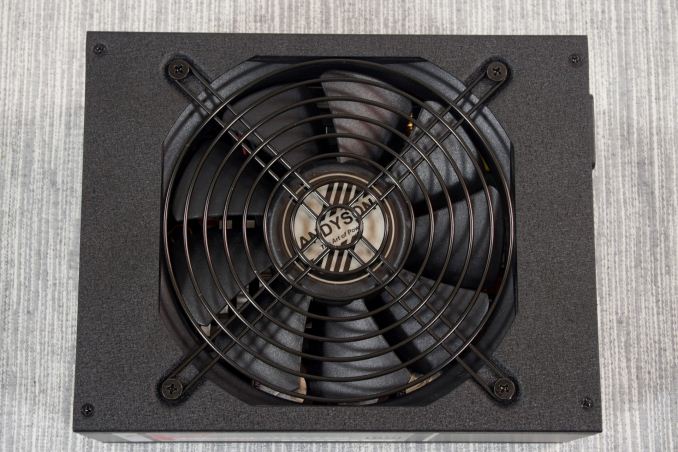
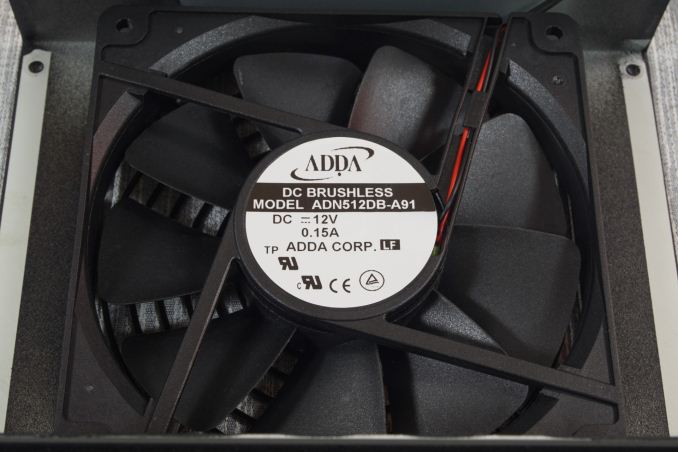
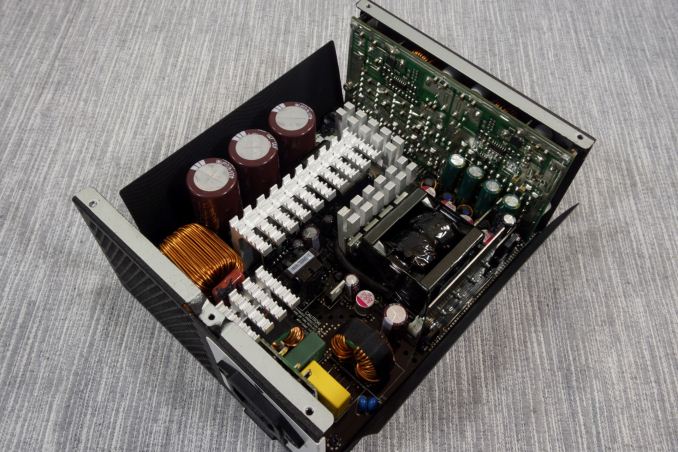
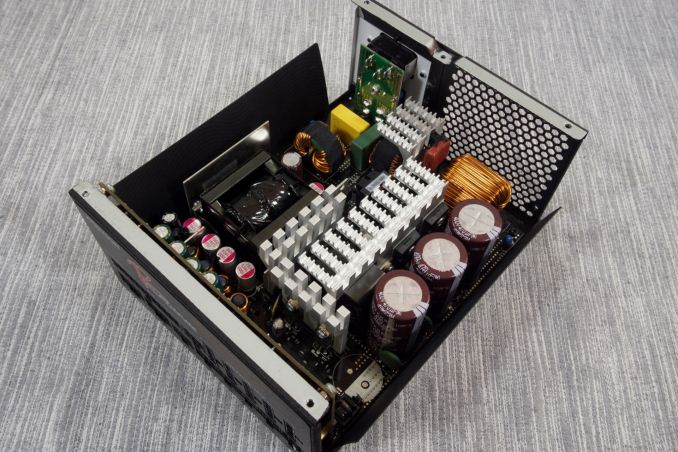
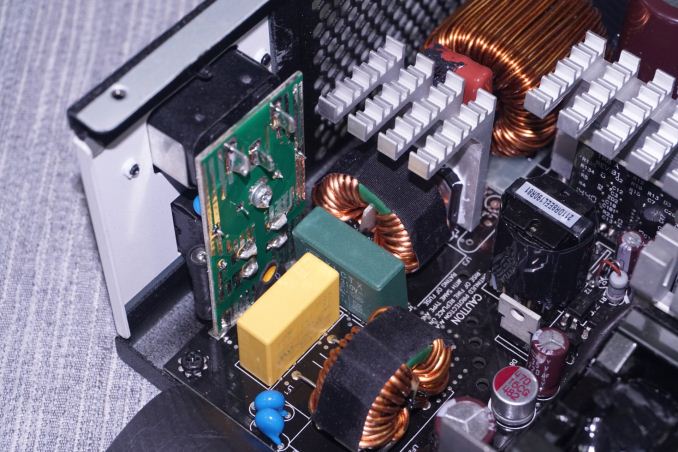
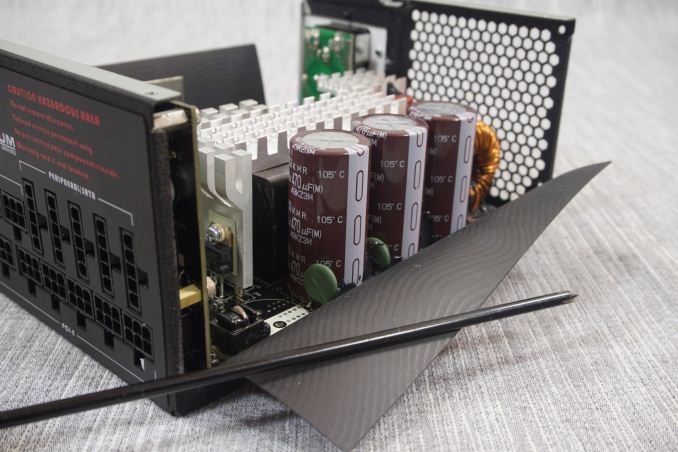

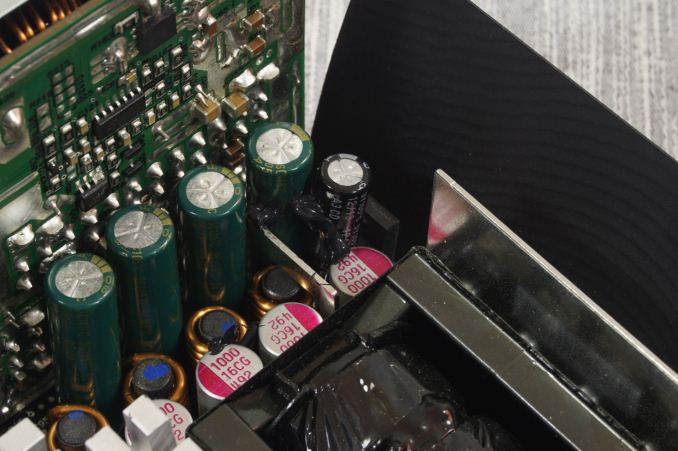








46 Comments
View All Comments
jabber - Saturday, April 25, 2015 - link
It's not so much the wattage its the size. A lot of us don't need legacy stuff like DVD drives, 4+ HDDs or Tri-SLi for gaming. So we are building smaller PCs. The days of the wardrobe PC are over. Wives and Gf's don't like huge black monoliths that light up like xmas trees. So the issue with the high wattages units are they don't go in smaller cases so easily. Up to 800W should be a standard sized unit no issue. I would have thought a smaller unit could be made up to 600W.KAlmquist - Sunday, April 26, 2015 - link
You should consider buying a fanless PSU.kevith - Sunday, April 26, 2015 - link
Just wanted to mention, that I have a Hiper "Type-R 580w Modular" PSU, that has been running with absolutely no flaws for 6 years and three builds now.meacupla - Sunday, April 26, 2015 - link
Since I see Anandtech being one review sites with emphasis on SSF type computers, I find it odd that they review these massive 1000W+ PSUs.Where are the SFX PSUs from silverstone? 450W and 600W in such a compact size is pretty amazing, and even those can be overkill in the cases they are designed to go in.
sweeper765 - Monday, April 27, 2015 - link
Here for the comments as well. I don't even read these useless psu reviews. Would never use such a monstrosity even if given for free!blzd - Saturday, May 16, 2015 - link
Just wanted to voice my opinion for having reviews of reasonable power supplies. Proper power supply reviews are few and far in between, even less so for the reasonable sized ones in the 450-750W range.I had a Lepa 500W Gold rated PSU with 41A on the +12v rail that could not support my GTX 970 upgrade despite it meeting all the system requirements. Had to pick up a 750W EVGA (Seasonic OEM) gold rated to replace it but I can't find proper reviews of any of these "normal" units.